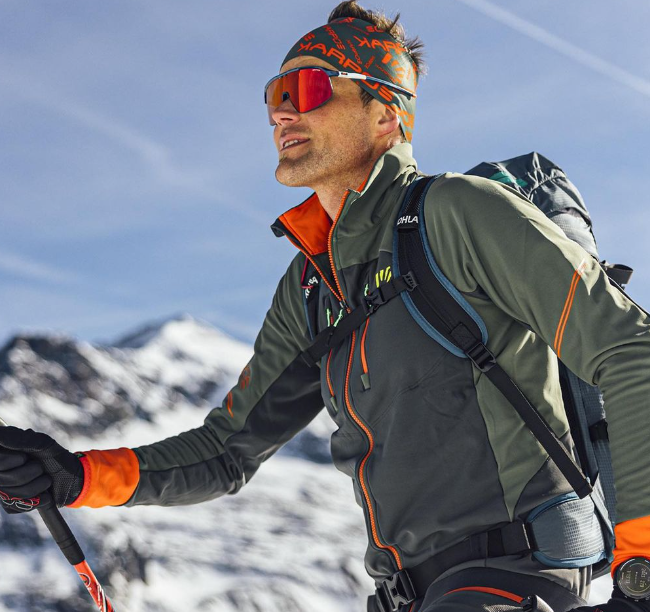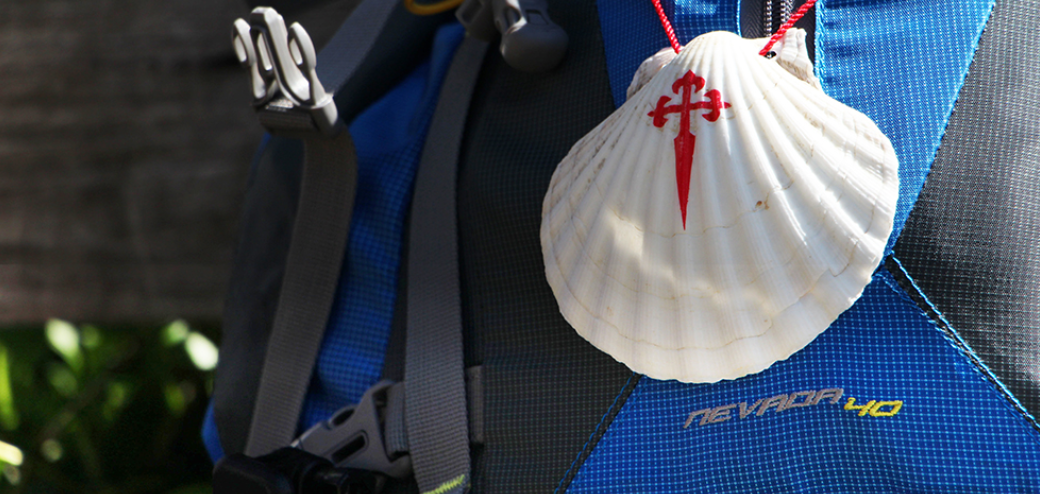
In the mountains, trekking poles have always been used, but over time we have evolved and we have gone from carved wooden sticks to aluminum and carbon fiber sticks ...
To maintain a valid weight balance and a correct posture of the back it is necessary to coordinate "right leg and left stick", "left leg and right stick", the stick must always support the movement on the side opposite the supporting leg.
Excellent walking companions, not only when hiking with heavy backpacks, but also for lighter trips.
Here is why it is recommended to use trekking poles, and how they can bring benefits during your excursion:
1 - With sticks yes improves balance: the walk of the quadrupeds is much more stable than that of the bipeds, and in fact having the sticks in the hands is like walking on all fours;
2- The above is evident above all downhill, up rough terrain (where a "wrong" support of the foot can be corrected by putting the weight on the stick on the same side, avoiding sprains or imbalances), or when it is necessary to make "acrobatic passes", for example to overcome some ford;
3- The possibility of unload part of the weight on the arms decreases the load on the legs and spine, reducing fatigue and improving walking comfort;
4- The movement of the arms, involved in walking with sticks, "opens" the rib cage, improving breathing ;
5- If we want to see it also in terms of fitness ... Well, keep in mind that the sticks also work there upper body muscles : torso and arms, otherwise little involved in hiking;
6 - The stick can also be useful in emergency situations : as a splint for a fractured limb, to replace or reinforce the damaged tent poles, or to make their way through thick vegetation.
Here are the mistakes to avoid:
Like all equipment, poles also have their own contraindications and these occur especially when the terrain on which we proceed becomes particularly steep and demanding.
Simply put, when there is a need for also use your hands to proceed, facing short sections of climbing or aided path, the poles can become a hindrance, if not a danger.
In these situations there are no middle ways : things like "I hold them in my hand because the passage is so easy ..." or "hook them to the backpack but do not close them so that in a moment you will use them again ...". On this type of terrain the sticks should not be used, but they go closed and carefully attached to the backpack . Our backpacks all have a side stick holder, practical, comfortable and quick to use.
And the descents on uneven ground (like stony ground)? In these cases it can happen that the tip of the stick remains wedged between the boulders, causing an imbalance of the hiker. If you do not want to give up their use, the best thing to do is to hold the sticks without putting your hands in the support straps . In this way we will not remain tied to the stick that may be stuck and, in the event of a slip, it will be enough to open the hand to release it and lean on to manage the fall.
TYPES OF TREKKING POLES
We therefore understood what the various types are, what they are for, based on the activity carried out and why it is important to always have them with you. Remaining therefore in the field of trekking poles we can have folding and telescopic poles.
Foldable trekking poles
Dispose of foldable sticks it is a real convenience not only because when needed they can be used, but above all because it becomes really easy to put them back in the backpack or externally in the special stick-holder strap without exceeding the overall dimensions, thus having your hands free. Plus, there's no risk of forgetting them around! (often happens for other fixed or telescopic models).
On the other hand, it is also fair to point out that not always a folding stick it is extremely long-lasting: it is unlikely that a professional of competitive trekking will use this variant forever. The foldable stick aims more than anything else to provide a practical, quick and functional solution for excursions, approaching with interest at different levels. This does not mean that they are not valid tools and the fact that there are models sold at important prices testifies to it precisely because they are foldable.
The folding poles have a fixed size, unlike the telescopic ones which instead provide the possibility of being adjusted in height. Furthermore, unlike the latter, the foldable solution offers on average greater stability and that is why they are generally preferred to others by those who practice complex and intense hiking.
How are folding sticks made?
A foldable trekking pole , once opened and ready to use is not very different from other types. The peculiarity lies precisely in the fallback system which is usually possible thanks to three joint systems that allow for a considerable reduction in height.

The cue is composed (generally) of three tubes that fold on themselves and are held together by a internal steel cable (or in other resistant material) well fixed to the handle and to the tip.
Telescopic trekking poles
When you approach hiking a great start could be represented by the purchase of telescopic trekking poles , excellent for familiarizing yourself with the equipment, especially for those who are not so inclined to discipline. These slats also have the particularity of shortening when not in use, but their real strong point is the height adjustment to favor the hiker during some passages on paths that are not always linear. Another important aspect to consider concerns the possibility of adapting the tool to different people, by acting on the telescopic mechanism.
How are telescopic poles made?
Usually the sticks from telescopic treks they are made up of two or three tubes of different diameters so that one can enter the other, fixed by one to two systems which have the task of locking the part at the correct height thanks to a threaded mechanism. Simply rotate the dial or the adjusted segment directly for reliable positioning.
In reality there is an expander inside which, once activated through rotation, expands and blocks the section concerned:

Be careful to tighten too much, it is possible that it will then be difficult to unscrew, as the dust and dirt that could accumulate during the excursion would almost certainly create greater friction, complicating the operation.
There are also lever locking systems, used in a medium-high range. Theoretically they offer extra safety since, in addition to screwing, there is also a mechanical stop which favors greater stability:

There are telescopic poles produced in aluminum , but the more expensive ones can provide the carbon as main material. Since it is a tool that winks even at beginners, the market offers particularly cheap models as long as you accept a slightly above average weight. For those who practice hiking on an occasional or occasional basis, the latter are just fine. The hiking poles with a double adjustment guarantee greater resistance and less vibrations, which are felt more in models that have a single anchor ring (i.e. those that are composed of two tubulars).
In conclusion, we are often asked whether telescopic or folding poles are better.
The folding poles have a better portability allowing to reduce the bulk when they are stored in the backpack and offer greater solidity, while the telescopically adjustable ones help to find the right height and can be very useful in case they are used in sharing with someone else. Regardless of the choice, the use of both poles is essential, both uphill and downhill. We personally recommend telescopic poles with FlickLock adjustment system and with grip also on the handle for use even in winter or on different types of trails.
Happy Adventures friends!













